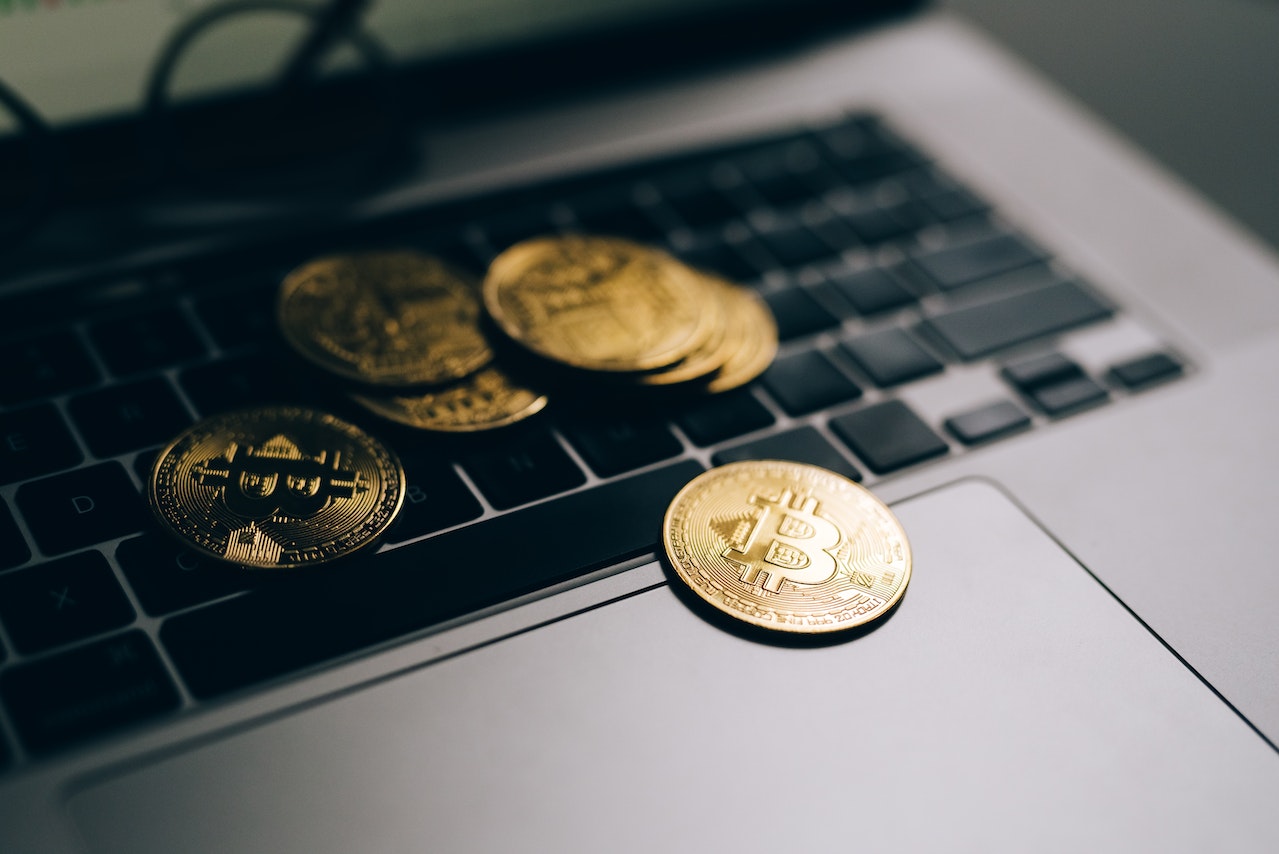
James Carter
Cryptocurrency Basics For Beginners

This article will explain and touch on every angle of cryptocurrency basics for beginners. If you want to get involved in the cryptocurrency industry, make sure you subscribe to our website.
Cryptocurrency is digital or virtual money that is decentralized, which means it is not managed by the main authority, such as a bank or government. Mining is making new bitcoins and sending them to other people. It involves solving challenging math puzzles to add transactions to a blockchain’s public ledger. (Also Read: What are cryptocurrency arbitrage opportunities)
With the introduction of Bitcoin in 2009, cryptocurrency has become a popular alternative to traditional fiat cash. There are currently thousands of different cryptocurrencies, each with its characteristics and technologies. Bitcoin, Ethereum, Litecoin, and Monero are some famous examples.
Cryptocurrencies operate on a decentralized network, enabling peer-to-peer transactions without intermediaries like banks. Because they are not based in one place, they are hard to censor and have a lot of privacy. But it’s important to know that the bitcoin market is more vulnerable to fraud because there aren’t any rules or central authority.

How cryptocurrency works
Cryptocurrency doesn’t rely on a central authority, like a bank, to protect and verify transactions. Instead, it uses a network of computers that are not connected. This is accomplished through the use of blockchain technology.
A blockchain is a public distributed ledger that records all cryptocurrency transactions. With each new set of recordings, more “finished” blocks are added, which makes it grow. Each block includes the previous block’s cryptographic hash, a timestamp, and transaction data.
When a transaction is made, the information is sent to the network and checked by many nodes. These nodes validate transactions and guarantee they are valid before putting them on the blockchain. Once the nodes agree that a transaction is good, it is added to the blockchain and stays forever.
Mining is a process of confirming transactions and putting them on the blockchain. Miners use powerful computers to solve complex math problems, verify transactions, and add them to the blockchain. In exchange for their efforts, miners receive a portion of the bitcoin being mined.
The cryptocurrency’s decentralized design and use of blockchain technology make it secure and tamper-resistant. It makes peer-to-peer transactions possible without middlemen, which could change how the financial industry works.
Examples of popular cryptocurrencies
Bitcoin is the first and most popular crypto. It was made by an unknown person or group who called themselves Satoshi Nakamoto in 2009. Bitcoin is a decentralized digital currency that can be used to make transactions between people and businesses that are safe and happen instantly.
Ethereum is a decentralized platform that runs good contracts. Smart contracts are apps that run exactly as planned without the risk of delay, censorship, fraud, or interference from a third party. Ether, the native coin of the Ethereum platform, powers these smart contracts. In addition to being a currency, Ether is utilized on the Ethereum network to pay for transaction fees and services.
Litecoin is a cryptocurrency that was formed as a fork of Bitcoin in 2011. Litecoin uses a different encryption algorithm than Bitcoin. This is done so that it can’t be broken by the special equipment used to mine Bitcoin.
Monero: Monero was launched in 2014 as a privacy-focused cryptocurrency. It is meant to give users a high level of anonymity and make transactions hard to track. Monero uses a proof-of-work system to stop people from making specialized mining hardware. This makes it easier for a broader range of people to use.
How to buy and sell cryptocurrency
To buy and sell cryptocurrency, you must use a cryptocurrency exchange. A cryptocurrency exchange is a platform that helps you buy, sell, and trade cryptocurrencies. Some popular exchanges include Coinbase, Binance, and Kraken.
Here are the general steps for buying and selling cryptocurrency on an exchange:
1. Set up a cryptocurrency wallet: A cryptocurrency wallet is a software program that stores your cryptocurrencies and allows you to send and receive them. There are different types of wallets, including online wallets, software wallets, and hardware wallets. Choose a wallet that is secure and meets your needs.
2. Choose a cryptocurrency exchange: There are many different cryptocurrency exchanges to choose from, each with its own fees, features, and supported cryptocurrencies. Research and compare other exchanges to find one that is right for you.
3. Register for an account: Most exchanges will require you to create an account by providing personal information and verifying your identity. This may involve uploading a government-issued ID or other documents.
4. Deposit funds: Once you have an account set up, you will need to deposit funds to buy cryptocurrency. Most exchanges accept bank transfers or credit/debit card payments.
5. Place an order: Once you have funds in your account, you can place an order to buy or sell a specific cryptocurrency. You can choose to place a market order, which will be filled at the current market price, or a limit order, which will only be filled at a specific price or better.
6. Withdraw your funds: Once you have sold your cryptocurrency and have funds in your account, you can withdraw them to your bank account or cryptocurrency wallet.
Before choosing an exchange to buy or sell cryptocurrency, it is vital to research, compare the different exchanges, and carefully think about the fees, security, and reputation. It’s also essential to keep your cryptocurrency in a safe place and use a safe wallet to store it.
Risks and considerations in crypto
There are several risks and considerations to keep in mind when it comes to cryptocurrency:
1. Volatility: Cryptocurrency prices can be highly volatile, with significant fluctuations occurring over a short period. This makes it hard to guess how much a cryptocurrency will be worth, which can lead to substantial losses if its value drops significantly.
2. Lack of regulation: Cryptocurrency is not currently regulated by any government or financial authority. This lack of regulation can make protecting your investments challenging and create opportunities for fraud or scams.
3. Fraud and scams: Due to the lack of regulation and the anonymous nature of cryptocurrency transactions, there is a higher risk of fraud and scams in the cryptocurrency market. Before investing your money, you should do a lot of research and ensure it is a good idea.
4. Cyber attacks: cryptocurrency exchanges and wallets are vulnerable to cyber attacks, which can result in losing your funds. Using strong passwords is crucial to ensuring your accounts are safe. You should also turn on extra security measures like two-factor authentication.
5. Tax considerations: In some countries, capital gains from the sale of cryptocurrency may be subject to taxation. It is essential to be aware of and follow any tax rules that apply to your cryptocurrency transactions.
Overall, it’s essential to be aware of the risks and things to think about with the cryptocurrency market and to carefully research and evaluate any investment opportunities before making a decision.
Using cryptocurrency for transactions
Here are a few different ways to use cryptocurrency for transactions:
1. Making purchases: Many merchants and online retailers now accept cryptocurrency as a form of payment, either directly or through payment processors such as Coinbase Commerce or BitPay. To purchase with cryptocurrency, you will need to provide the merchant with your cryptocurrency wallet address and the amount of cryptocurrency you wish to use.
2. Accepting cryptocurrency as payment: If you are a business owner, you may accept cryptocurrency as payment for goods or services. It can be done through a payment processor, which will handle the conversion of the cryptocurrency to your local currency.
3. Sending cryptocurrency to others: You can send cryptocurrency to others by providing them with your cryptocurrency wallet address and the amount you wish to send. This can be done directly between individuals or through the use of a cryptocurrency exchange.
Using cryptocurrency for transactions can be helpful in several ways, such as making transactions faster and cheaper than traditional payment methods. Also, it’s essential to be aware of the risks and things to consider, like cryptocurrency prices change a lot, and there aren’t any rules. It’s also vital to keep your cryptocurrency safe by using a safe wallet and taking other steps to keep your money safe.
Cryptocurrency Mining
Mining is proving transactions on a cryptocurrency network and adding them to the blockchain. Miners use special computers to solve complex math problems so that transactions can be verified and added to the blockchain. In return for their job, miners are rewarded with a certain amount of the cryptocurrency being mined.
The first miner to solve the riddle adds a block to the blockchain and receives a portion of the bitcoin being mined. This process is known as “proof-of-work” and is used by many cryptocurrencies to secure the network and verify transactions.
There are several benefits to mining cryptocurrencies:
1. Potential for profit: If the value of the cryptocurrency being mined increases, miners may be able to sell their mined coins for a profit.
2. Decentralization: Mining helps ensure the cryptocurrency network is safe and reliable by making it less centralized.
3. Support for the network: By participating in mining, you can help support and improve the network of cryptocurrencies.
However, there are also drawbacks to mining, including:
1. High cost: Setting up a mining operation can be expensive, as it requires specialized hardware and a lot of electricity.
2. Competition: There are many competitors in the mining industry, making it difficult for individual miners to profit.
3. Risk of obsolescence: As time passes, the mining puzzles can get more complex, making it harder for miners to solve and possibly making their equipment useless.
Overall, mining cryptocurrencies can be an excellent way to make money, but it’s essential to consider the costs and risks before starting a mining operation.
So briefly, all the explanation above was about cryptocurrency basics for beginners. (Also Read: A Beginner’s Guide To Cryptocurrency Analysis Tool)
Latest
Blockchain
09 May 2024
Blockchain
19 Apr 2024
Blockchain
16 Jan 2024
Blockchain
31 Aug 2023
Blockchain
24 Jun 2023
Blockchain
24 Jun 2023













